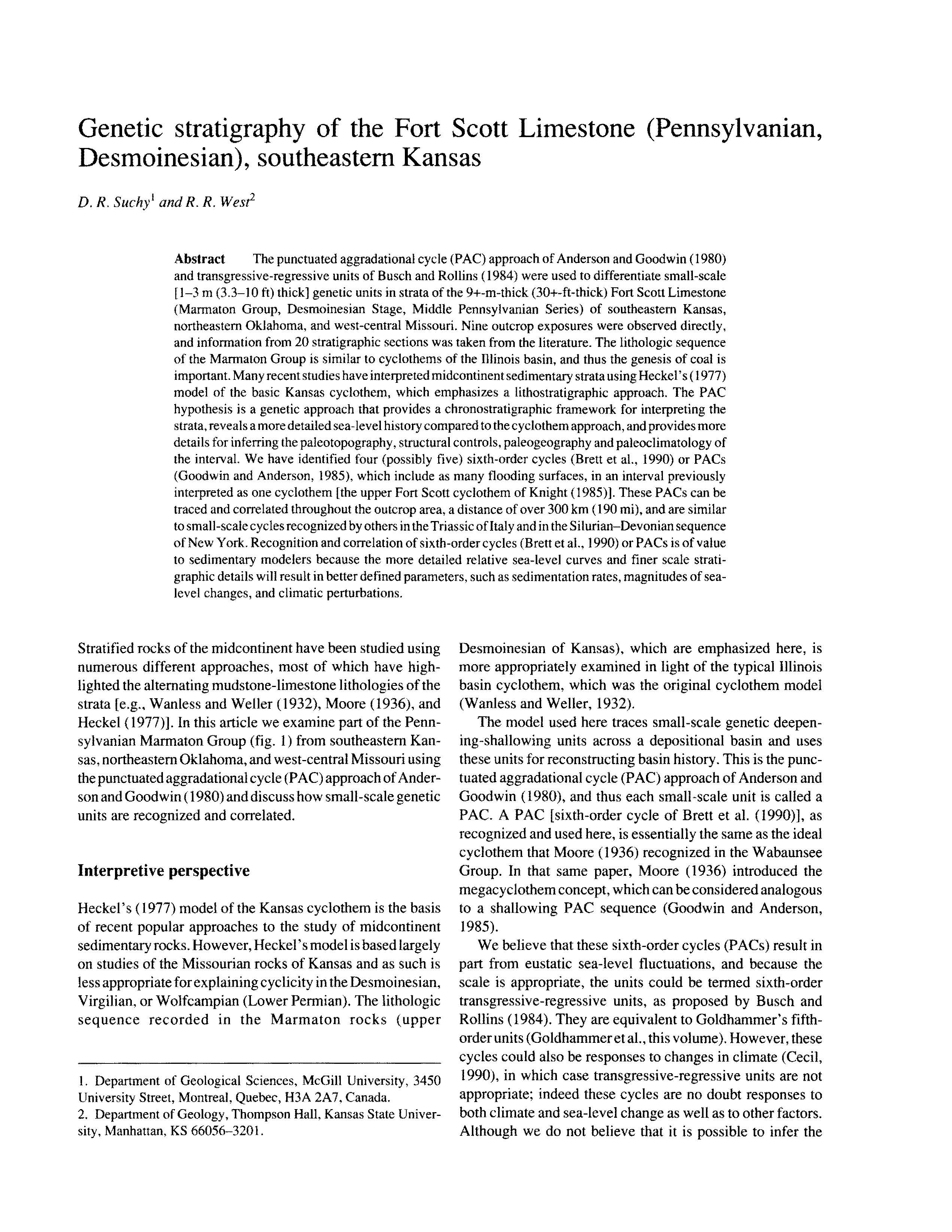Genetic stratigraphy of the Fort Scott Limestone (Pennsylvanian, Desmoinesian), southeastern Kansas
DOI:
https://doi.org/10.17161/kgsbulletin.no.233.20458Abstract
The punctuated aggradational cycle (PAC) approach of Anderson and Goodwin (1980) and transgressive-regressive units of Busch and Rollins (1984) were used to differentiate small-scale [1-3 m (3.3-10 ft) thick] genetic units in strata of the 9+-m-thick (30+-ft-thick) Fort Scott Limestone (Marmaton Group, Desmoinesian Stage, Middle Pennsylvanian Series) of southeastern Kansas, northeastern Oklahoma, and west-central Missouri. Nine outcrop exposures were observed directly, and information from 20 stratigraphic sections was taken from the literature. The lithologic sequence of the Marmaton Group is similar to cyclothems of the Illinois basin, and thus the genesis of coal is important. Many recent studies have interpreted midcontinent sedimentary strata using Heckel's (1977) model of the basic Kansas cyclothem, which emphasizes a lithostratigraphic approach. The PAC hypothesis is a genetic approach that provides a chronostratigraphic framework for interpreting the strata, reveals a more detailed sea-level history compared to the cyclothem approach, and provides more details for inferring the paleotopography, structural controls, paleogeography and paleoclimatology of the interval. We have identified four (possibly five) sixth-order cycles (Brett et al., 1990) or PACs (Goodwin and Anderson, 1985), which include as many flooding surfaces, in an interval previously interpreted as one cyclothem [the upper Fort Scott cyclothem of Knight (1985)]. These PACs can be traced and correlated throughout the outcrop area, a distance of over 300 km (190 mi), and are similar to small-scale cycles recognized by others in the Triassic of Italy and in the Silurian-Devonian sequence of New York. Recognition and correlation of sixth-order cycles (Brett et al., 1990) or PACs is of value to sedimentary modelers because the more detailed relative sea-level curves and finer scale stratigraphic details will result in better defined parameters, such as sedimentation rates, magnitudes of sea-level changes, and climatic perturbations.
Downloads

